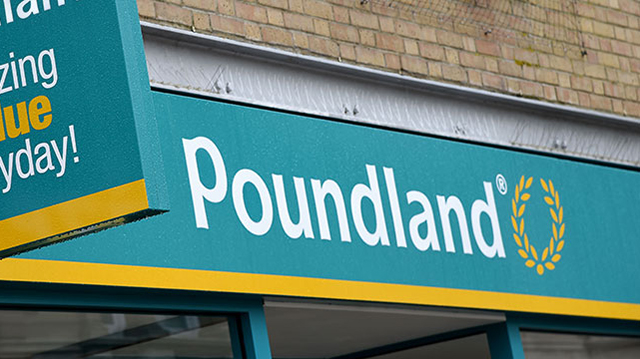 A private equity firm is said to be scouting the country for sites, says one rumour. A disruptive new entrant may be planning a surprise move, says another. A major third party could repackage its services to meet emerging demand, says a third.
A private equity firm is said to be scouting the country for sites, says one rumour. A disruptive new entrant may be planning a surprise move, says another. A major third party could repackage its services to meet emerging demand, says a third.
It could all be nonsense, of course, but the idea that a Regus-style operator could do for serviced logistics floorspace what the US giant did for office floorspace, just won’t go away.
Serviced warehousing – why not? A business-to-business self-store sector, with additional pay-as-you-go extras? A kind of à la carte warehousing to challenge the old prix fixe model; one that could appeal to Ebay traders moving out of their garages and into commercial space; new retailers making low-impact debuts in the regions; extra space to smooth out the seasonal blips of Black Friday and Christmas. A great idea.
But while a serviced warehouse sector might look like an idea whose time is coming – or has come – plenty in the logistics world think it’s a non-starter. And if, by some miracle, it did get started, they guess it would be a microscopic niche business.
John Eynon is managing director at Import Services, which operates a 190,000 sq ft import depot at London Gateway and a further 473,000 sq ft at Southampton, a large chunk of it just yards from the dockside. He says one of the reasons a separate serviced warehouse sector won’t get going is that third-party logistics businesses (3PLs) like his are already doing it.
“Essentially, we’re already doing serviced warehouse space,” he says. “Except that where serviced office providers charge by the square foot, we charge per pallet per week. And then charge extras, like the serviced office people, only it’s not for photocopying but for receiving, despatching, preparing, packaging, and so on.”
Import Services receives goods from overseas suppliers, picks, repackages if necessary, and despatches them to retailers or doorsteps. Its clients range from the mighty Chinese manufacturers, through to high-street names such as Argos, to small operators nobody will have heard of. Last year it completed 5m picks, and volumes are growing at 10% a year. There are dozens of 3PLs providing this kind of à la carte warehousing.
Eynon reckons that seriously short-term logistics needs are already well handled by a competitive haulage sector. “If you want spot storage, hauliers will let you put your 50 pallets somewhere for a few weeks,” he says. “And we do the cleverer stuff. So I think most of the needs of potential users of serviced warehousing are already being met. We pretty much do what Regus does, in our own sector, and it’s hard to see how you could repackage it as a new product called ‘serviced warehousing’.”
As for Ebay traders moving up the retail food chain, out of their spare rooms or garages and into proper warehousing, Eynon reckons the self-storage market probably has that sorted. “There’s no reason why self-store couldn’t become more business-to-business, but if you wanted additional services, you’d come to somebody like us,” he says.
Property industry number-crunchers think Eynon could be right. Kevin Mofid, director of logistics research at Savills, says: “There are so many factors against it. Conditions aren’t favourable. Serviced warehousing may come one day, but not yet. The planets just aren’t in alignment.”
The planets he has in mind are the balance of supply and demand, the supply of older, cheaper warehouses, and the existing services offered by 3PLs.
Mofid says that serviced warehousing is something that has been talked about for years. He says: “Various research projects have come and gone. The appeal of something short-term and flexible for overflow, seasonal demand, emerging retailers or whatever – it seems worth exploring.
However, Mofid believes market conditions aren’t favourable and that there is simply too much cheap, secondhand industrial floorspace on the market, so the needs that could be met by serviced warehousing can in fact already be met.
He says: “If the supply of secondhand floorspace gets tighter – and although it’s falling, we’re not quite at that tipping point yet – I still don’t see it working because who would take the risk of providing serviced warehousing? Landlords, or 3PLs, or a disruptive newcomer to the market? With rising build costs, land prices and soon rising interest rates, there are too many factors against it.”
According to Mofid, the logistics property business is not yet in a position to provide serviced warehousing equivalent to the office sector, and in any case it may not be needed. “There’s a missing link,” he says. “Supply chain margins being what they are, and the pressure on reducing supply chain cost being what it is, we have a hugely complex equation here, made more complex by the fact there are so many potential stakeholders – landlords, 3PLs, new service providers, occupiers.”
Down in the deal-making engine room of logistics property, the mood is the same: serviced warehousing, as a branded sector, is going nowhere.
Josh Pater, assistant director at Deloitte Real Estate, says: “Historically, there has been demand, particularly around the holiday periods, for short-term and temporary expansion space. Urban logistics growth may also fuel a ‘common user’ approach. However, there are [problems] that will make this more difficult to achieve when compared to the serviced office sector.”
The biggest is that endless downward pressure on supply chain costs means occupiers are perhaps too clever to allow a serviced warehousing brand to work.
“Occupiers want certainty, not short-term deals,” says Pater. “And their needs vary much more than those of an office occupier. Office users are all pretty much interchangeable, so it’s easy for the serviced office provider, but warehousing needs to change so much from occupier to occupier: different fit-outs, even different doors in different places. So I can’t see serviced warehousing being more than small niche.”
But never say never, so the saying goes. Who knows what the well-funded private equity houses, the mould-breaking 3PLs and new-entrant self-store operators may have in mind? But the idea of a large serviced warehouse sector to match the serviced office sector seems – for now – one whose time has not yet come.
 Seasonal joy
Seasonal joy
Parcel delivery disasters in the run-up to Christmas have become a traditional feature of the festive season, as reliable and treasured as the tree, the pudding and the indigestion.
But this year could be different. The awful publicity that engulfed Marks & Spencer’s online fulfilment operation last year has served as a warning to retailers. This year they have organised their supply chain with plenty of spare capacity – and there is reported to be little need for extra short-term seasonal floorspace.
Josh Pater at Deloitte Real Estate says: “They’ve built seasonal bumps into their supply chain after three or four years of uncertainty. The move serves them well because they know it would be hard to rent temporary space in the tight market we have today.”
An unscientific survey of short-term Christmas requirements in circulation this summer suggests seasonal take-up will be low in 2015.
Steven Mitchell, director of industrial and logistics at Colliers International, says: “We may see the discounters like Aldi and Lidl take a little extra, but I see no sign of it yet, and besides, their focus is on building a permanent supply chain.”
“The parcels operations have already invested in supply chains, and are better prepared than before. These days they are not looking for sticking plasters, but long-term solutions.”
The big exception is Royal Mail, which has several large regional requirements of about 100,000 sq ft.











